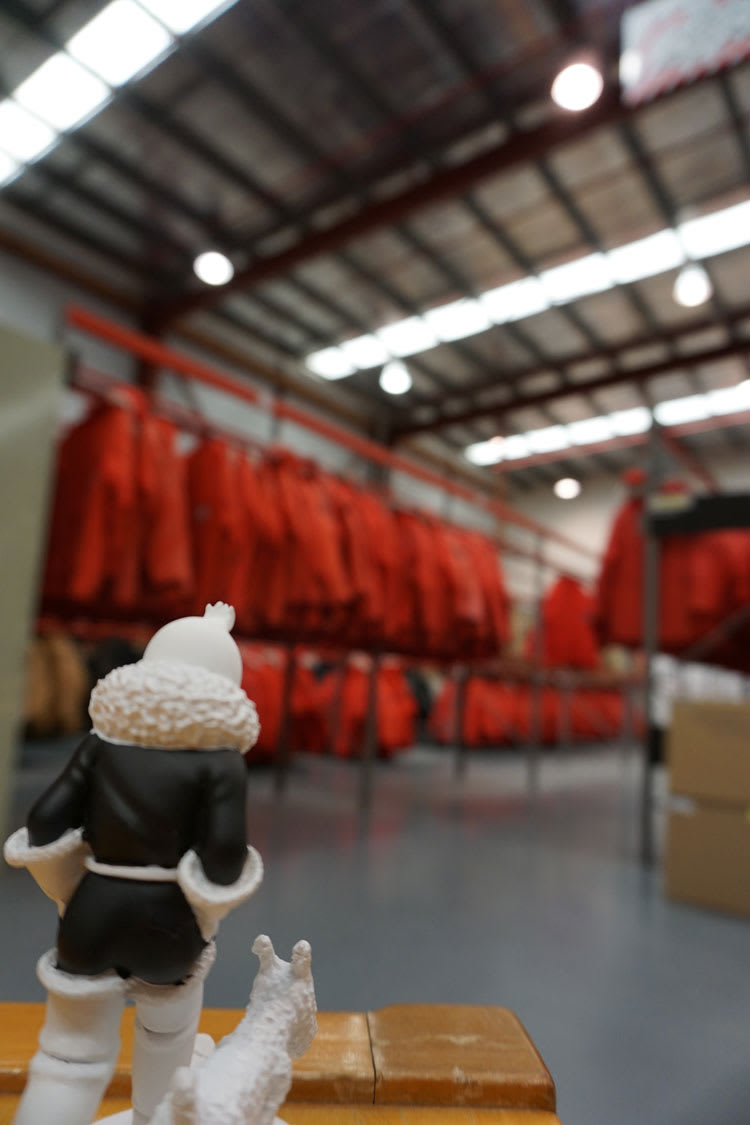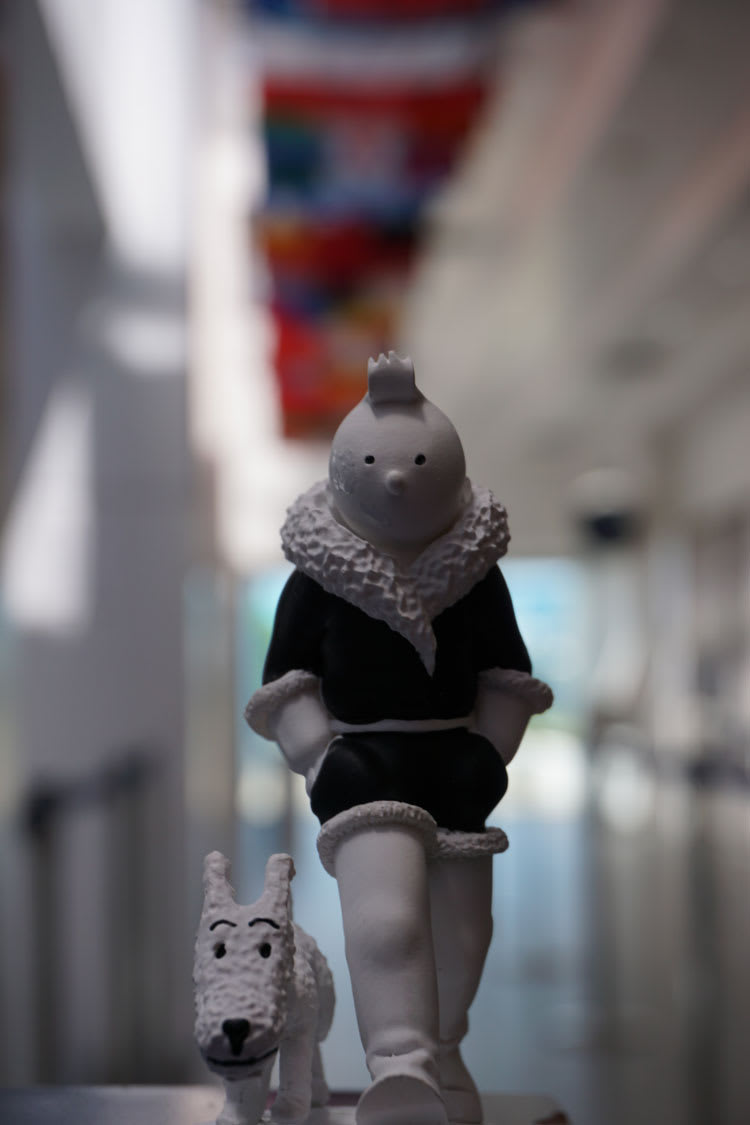The IceCube team in Brussels has been getting ready for a special deployment to the South Pole. On December 11, Gwen de Wasseige, a graduate student at the Interuniversity Institute for High Energy Physics (IIHE), left Belgium for Antarctica, to take part in the austral summer maintenance and operations activities at the IceCube Neutrino Observatory. However, she was not flying on her own but in the company of one of the most famous Belgians of all time, Tintin.
Tintin, the sharp, kind young reporter created by cartoonist Georges Prosper Remi, known as Hergé, has starred in a series of adventures that have taken him, and his collaborators, around the world. Now, thanks to the partnership between Moulinsart, IIHE and IceCube, Tintin is visiting the Amundsen-Scott South Pole Station for the first time.
“I’m looking forward to Tintin’s news from the Pole almost as much as I looked forward to his weekly when I grew up in Belgium,” says Francis Halzen, IceCube’s principal investigator and a professor of physics at the University of Wisconsin–Madison.

Tintin’s visit to the South Pole will be detailed in a series of outreach news articles in selected media outlets––including the official Tintin website and related social networks.
The origin of one of the main characters of the Tintin series, Professor Calculus, has plenty in common with the reason why IceCube was ever built. Professor Calculus is based on the figure of Auguste Piccard, a Swiss physicist and a professor at the University of Brussels, who studied cosmic rays using hot air balloon flights in the 1930s. Piccard and his assistant Paul Kipfer were the first men to reach the stratosphere. Those flights, initiated by Victor Hess in 1911, proved that very high energy particles bombard the Earth from every direction, although their sources remain a mystery to date. IceCube is a cubic-kilometer-size detector that uses neutrinos instead of light to explore the universe. The main purpose of this telescope is to find the origin of very high energy neutrinos, which are produced in conjunction with the cosmic-ray particles that Piccard once measured with a balloon.
As Hergé once said, “By believing in his dreams, man turns them into reality.”
Gwen’s expedition brings her and Tintin to the South Pole for two weeks at the end of December, including Christmas. Gwen and the Moulinsart team will create an expedition diary of their trip and record the activities of Gwen and other IceCube researchers at the Pole.

“To many of us, Tintin embodies a sense of adventure and resourcefulness that I believe also characterizes IceCube. Apart from the exciting science providing a new view of the cosmos, this is what speaks to young people who are considering becoming scientists. I’m delighted with how the partnership between Tintin and Gwen illustrates the appeal of scientific adventure to both young men and women,” explains Olga Botner, IceCube spokesperson and a professor of physics at Uppsala University.
The IceCube community is excited to invite Tintin fans on a new adventure, a unique trip from the bottom of the Earth to the edges of the Universe.
“Tintin has been traveling around the world for more than 80 years, bringing young people of all ages on his thrilling adventures. It is a privilege for me to invite him on a new science exploration in one of the few places he has never been to,” says Gwen de Wasseige.
Stay tuned! Follow #TintinSouthPole.
Moulinsart is the company that protects and promotes the work of Hergé. The body of art that Hergé created is of great importance and universal significance and is protected by international copyright laws.